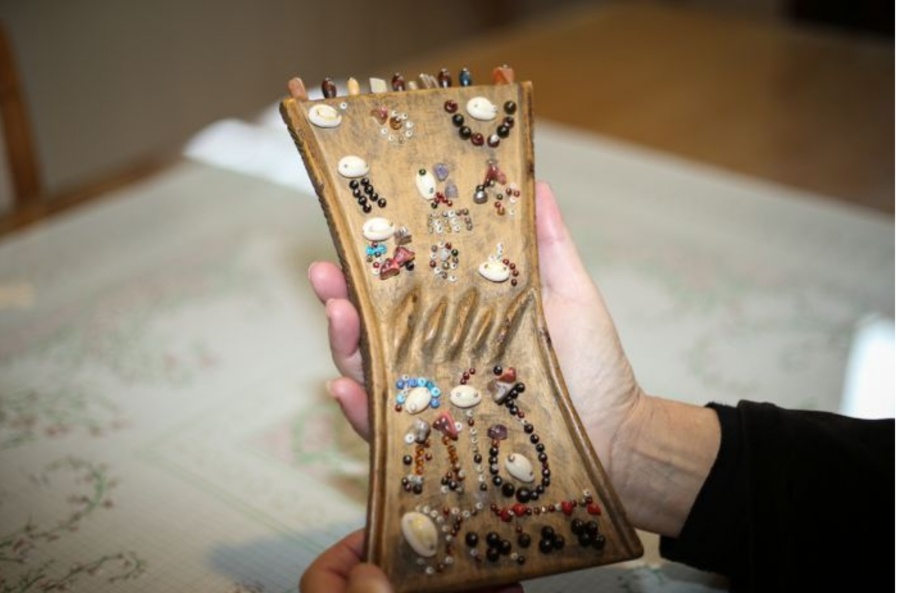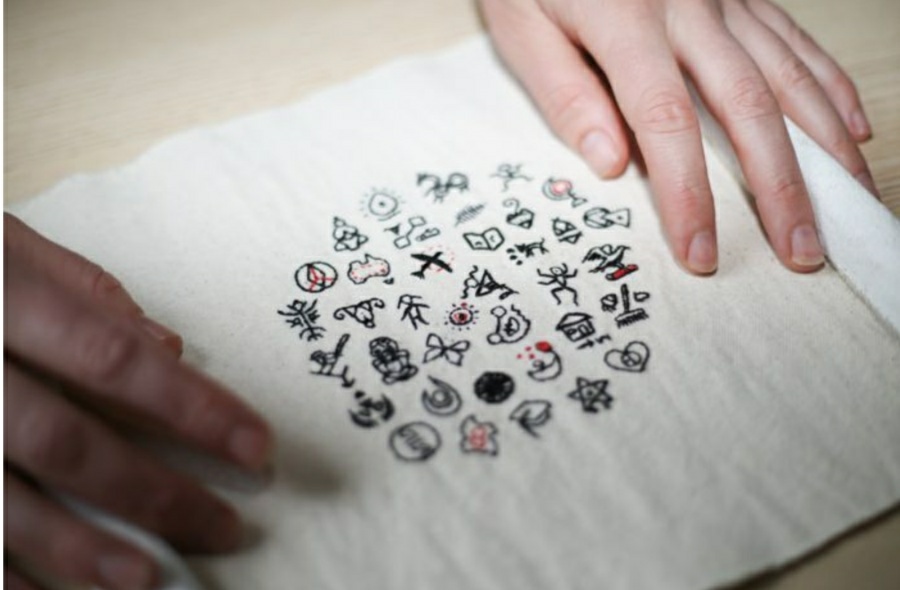Improving your memory using ancient indigenous techniques
By Larissa Romensky
 Lynne Kelly at home with some of her indigenous memory devices.
Lynne Kelly at home with some of her indigenous memory devices.
Forget Sudoku and cryptic crosswords, Australia’s senior memory champion looks to ancient indigenous cultures from around the world for memory techniques.
Author and academic Lynne Kelly, who won the over-60 category of the Australian Memory Championships in 2017 and 2018, said she was living proof that memory could be improved.
“I have a naturally really bad memory,” said Dr Kelly, who lives in Castlemaine, Victoria.
Having struggled to learn languages at school, she is astounded that as an adult she has been able to learn and retain French and Mandarin.
“I have all these techniques at my fingertips to use all the time,” Dr Kelly said.
She said games like Sudoku only improved people’s ability to play Sudoku and became very repetitive.
“Why not memorise something useful?” Dr Kelly said.
Instead she was fascinated by the ability of ancient cultures to retain vast amounts of information about plants and animals using memory methods.
In her book Memory Craft, Dr Kelly explores a range of techniques including using the landscape and handheld physical devices to help memorise information.
“Essentially you are taking location after location of physical space and associating information with it,” Dr Kelly said.
“Your brain will associate the physical location with the information — it’s called a temporal snapshot.”
Miniature ‘memory palaces’

The Lukasa was once used as a portable memory device.
When Dr Kelly first stumbled across a memory device that was a piece of wood with beads, shells, stones and other found objects carefully nailed onto it, she thought it was a “load of rubbish” — until she made her own.
The portable wooden device or Lukasa acted as a miniature landscape or ‘memory palace’ with each bead acting as a location in the landscape.
“Each bead is linked to a story which encodes more information, then more and more complex knowledge is built on that,” Dr Kelly said.
“Your brain will see something to link the bead to the information you are encoding.”
Once used by the Luba people from the Democratic Republic of Congo, the device contained historical information including the order of ceremony used in their singing, dancing and performing traditions.
“I started encoding a field guide to the entire 400 and something birds of Victoria, and it shocked me how effective it was,” Dr Kelly said.
This initial discovery led her to learn about many similar memory devices throughout other indigenous cultures.
Remembering precious life memories

Alice Steel runs memory workshops based on Lynne Kelly’s findings.
Researcher and tutor Alice Steel runs workshops based on Dr Kelly’s ideas.
The deputy director of The Orality Centre, an organisation that researches memory systems, Ms Steel was inspired after reading Memory Craft.
One of her most prized possessions is her own personal ‘winter count’ that tells the story of her 37 years.
It is based on the practice of the Sioux Native American people, who would paint a significant pictogram representing each year of their lives to aid them in telling the history of their tribe.
The central symbol in Ms Steel’s ‘winter count’ is her own birth. In a clockwise spiral, she has added the most significant memory from each year of her life, with earlier childhood memories drawn from her mother.
“All of the people I am connected to and associated with, my family members, my friends, enter into it because they’re all part of my memories,” Ms Steel said.
Births, deaths and travel are delicately depicted in symbols spiralling clockwise. Red denotes every five years.
“It’s amazing to have my whole life encoded onto one little object that holds all my precious memories,” Ms Steel said.
“Each symbol is really significant to me, and as the years go on, each winter I look forward to putting a new one on.
“It will help me pass on my story to my children.”

Alice Steel’s ‘winter count’ features one significant symbol from each year of her life.
Age no barrier
Dr Kelly believes age is no barrier to retaining information.
“Being old does not mean your memory has to decay, that’s a myth,” Dr Kelly said.
“The trouble is we are outsourcing our memory to writing and now to technology and not using it.
“It’s a muscle. It’s like every other muscle in the body, it will waste away if you do not use it.”




